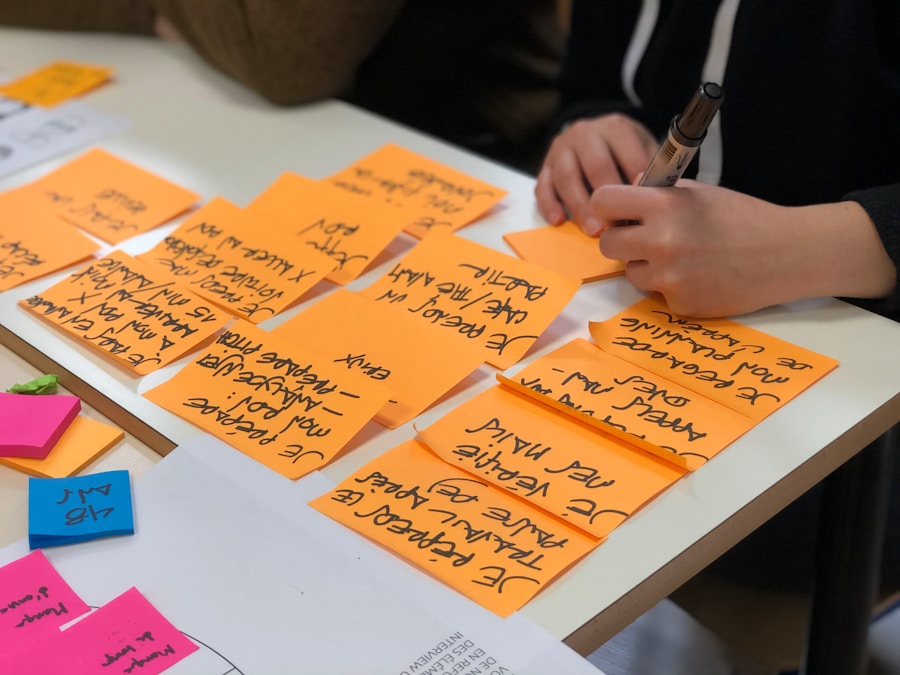
Effective communication serves as the backbone of all human interactions, whether in personal relationships, professional environments, or community engagements. It is not merely about exchanging information; it encompasses the ability to convey thoughts, feelings, and intentions clearly and persuasively. The significance of effective communication cannot be overstated, as it directly influences the quality of relationships and the success of collaborative efforts.
In workplaces, for instance, clear communication can lead to enhanced productivity, reduced misunderstandings, and a more cohesive team dynamic. When team members articulate their ideas and concerns effectively, they foster an environment where innovation can thrive. Moreover, effective communication is essential for conflict resolution.
Misunderstandings often arise from poor communication, leading to disputes that could have been easily avoided. By honing communication skills, individuals can navigate complex conversations with greater ease, ensuring that all parties feel heard and respected. This not only mitigates potential conflicts but also strengthens relationships by building a foundation of trust and understanding.
In essence, effective communication is a critical skill that enhances interpersonal dynamics and facilitates smoother interactions across various contexts.
Key Takeaways
- Effective communication is crucial for success in all aspects of life, including work, relationships, and community interactions.
- Building trust and rapport through communication involves being genuine, empathetic, and transparent in your interactions with others.
- Active listening plays a key role in effective communication by showing respect, understanding, and empathy towards the speaker.
- Addressing conflict and difficult conversations requires open and honest communication, active listening, and a willingness to find a resolution.
- Setting clear expectations and goals through communication helps to align everyone’s efforts and ensure a shared understanding of what needs to be achieved.
Building Trust and Rapport through Communication
Trust and rapport are fundamental components of any successful relationship, whether personal or professional. Effective communication plays a pivotal role in establishing these elements. When individuals communicate openly and honestly, they create an atmosphere of transparency that fosters trust.
For example, in a workplace setting, a manager who shares information about company changes and listens to employee concerns demonstrates a commitment to open dialogue.
Rapport is built through shared experiences and mutual understanding, both of which are cultivated through effective communication.
Engaging in active conversations, showing empathy, and being attentive to non-verbal cues can significantly enhance rapport between individuals. For instance, when colleagues take the time to understand each other’s perspectives during discussions, they create a sense of camaraderie that can lead to more effective collaboration. This rapport not only improves team dynamics but also contributes to a more positive work environment where individuals feel valued and connected.
Active Listening and its Role in Effective Communication

Active listening is a crucial component of effective communication that often goes overlooked. It involves fully concentrating on what is being said rather than merely hearing the words. This practice requires individuals to engage with the speaker through verbal affirmations and non-verbal cues such as nodding or maintaining eye contact.
By demonstrating genuine interest in the speaker’s message, active listeners create an environment where individuals feel valued and understood. This is particularly important in professional settings where team members may have differing viewpoints or ideas. The role of active listening extends beyond simply understanding the content of a message; it also involves interpreting emotions and intentions behind the words.
For example, during a team meeting, a member may express frustration about a project delay. An active listener would not only acknowledge the concern but also explore the underlying reasons for that frustration, fostering a deeper understanding of the issue at hand. This level of engagement can lead to more meaningful discussions and ultimately result in more effective problem-solving strategies.
Addressing Conflict and Difficult Conversations
| Metrics | 2019 | 2020 | 2021 |
|---|---|---|---|
| Number of conflict resolution trainings conducted | 15 | 20 | 25 |
| Percentage of employees who reported feeling more confident in addressing conflict | 65% | 70% | 75% |
| Number of difficult conversations mediated by HR | 30 | 35 | 40 |
Conflict is an inevitable part of human interaction, but how it is addressed can significantly impact relationships and outcomes. Effective communication is essential when navigating difficult conversations or resolving conflicts.
This involves using clear and respectful language while expressing one’s feelings and perspectives without assigning blame. For instance, when two colleagues disagree on a project approach, instead of resorting to accusations or defensiveness, they can engage in a constructive dialogue by focusing on the issue rather than personal attributes. By employing “I” statements—such as “I feel concerned about the timeline”—individuals can express their feelings without making the other party feel attacked.
This technique encourages open dialogue and allows both parties to explore solutions collaboratively rather than defensively.
Setting Clear Expectations and Goals through Communication
Clear communication is vital for setting expectations and goals within any context—be it personal relationships, workplace environments, or community initiatives. When expectations are articulated clearly, individuals are better equipped to understand their roles and responsibilities. In a professional setting, for example, managers who outline specific objectives for their teams provide clarity that can enhance performance and accountability.
Moreover, setting goals through effective communication involves not only articulating what needs to be achieved but also ensuring that all parties are aligned on the desired outcomes. This alignment can be achieved through regular check-ins and updates that allow for adjustments as needed. For instance, in project management, teams that engage in frequent discussions about progress and challenges are more likely to stay on track and meet their deadlines.
By fostering an environment where expectations are clearly communicated and understood, organizations can enhance productivity and morale.
Providing Constructive Feedback and Recognition

Feedback is an essential aspect of communication that can significantly influence individual growth and team dynamics. However, the manner in which feedback is delivered can make all the difference between fostering improvement or causing resentment. Constructive feedback should be specific, actionable, and delivered in a manner that encourages growth rather than discouragement.
For example, instead of saying “You did this wrong,” a more constructive approach would be “I noticed that the report could benefit from additional data analysis; perhaps we could work together on that.” Recognition is equally important in the feedback process. Acknowledging achievements—no matter how small—can motivate individuals and reinforce positive behaviors. In workplaces where recognition is part of the culture, employees are more likely to feel valued and engaged in their work.
For instance, a simple acknowledgment during team meetings or personalized notes of appreciation can go a long way in boosting morale and fostering a sense of belonging within the team.
Cultivating a Positive and Inclusive Communication Environment
Creating a positive and inclusive communication environment is essential for fostering collaboration and innovation. Such an environment encourages individuals to express their thoughts freely without fear of judgment or exclusion. To cultivate this atmosphere, organizations must prioritize diversity in communication styles and perspectives.
This means recognizing that individuals may have different ways of expressing themselves based on their backgrounds or experiences. Training programs focused on cultural competence can help team members understand these differences better. For instance, workshops that explore various communication styles can equip employees with the tools needed to engage with colleagues from diverse backgrounds effectively.
Additionally, promoting open forums where everyone has an opportunity to share their ideas can enhance inclusivity. When individuals feel safe to voice their opinions, it leads to richer discussions and more innovative solutions.
Applying Effective Communication in Various Settings: Work, Relationships, and Community
The principles of effective communication extend across various settings—workplaces, personal relationships, and community interactions—each requiring tailored approaches while adhering to core communication tenets. In professional environments, effective communication fosters collaboration among team members while ensuring alignment with organizational goals. Regular team meetings that encourage participation from all members can lead to enhanced creativity and problem-solving capabilities.
In personal relationships, effective communication is equally vital for maintaining healthy connections. Open dialogues about feelings, expectations, and boundaries help partners navigate challenges together while strengthening their bond. For instance, couples who practice active listening during discussions about sensitive topics often find it easier to resolve conflicts amicably.
In community settings, effective communication plays a crucial role in mobilizing individuals towards common goals—be it social initiatives or local projects. Community leaders who communicate transparently about objectives and invite input from residents foster a sense of ownership among community members. This participatory approach not only enhances engagement but also leads to more sustainable outcomes as individuals feel invested in the success of their community initiatives.
In conclusion, effective communication is an indispensable skill that permeates every aspect of human interaction. By understanding its importance, building trust through open dialogue, practicing active listening, addressing conflicts constructively, setting clear expectations, providing feedback thoughtfully, cultivating inclusivity, and applying these principles across various settings, individuals can enhance their relationships and contribute positively to their environments.
If you’re looking for more conversation topics to keep things interesting, you might want to check out this article on conversation topics about animals. It offers a variety of engaging subjects to discuss, from pets to wildlife conservation. Whether you’re an animal lover or just looking for a fun and light-hearted topic, this article has you covered.
FAQs
What are key dialogue topics?
Key dialogue topics are important and relevant subjects that are discussed in a conversation or a discussion. These topics can vary depending on the context and the participants involved.
Why are key dialogue topics important?
Key dialogue topics are important because they help to facilitate meaningful and productive conversations. They can help to guide the discussion and ensure that important issues are addressed.
How can key dialogue topics be identified?
Key dialogue topics can be identified by considering the purpose of the conversation or discussion, the interests and concerns of the participants, and any relevant current events or developments.
What are some examples of key dialogue topics?
Examples of key dialogue topics include current events, social issues, personal experiences, and professional developments. These topics can be broad or specific, depending on the context of the conversation.
How can key dialogue topics be effectively discussed?
Key dialogue topics can be effectively discussed by ensuring that all participants have the opportunity to share their perspectives, actively listening to others, and maintaining a respectful and open-minded attitude. It can also be helpful to establish ground rules for the discussion.



